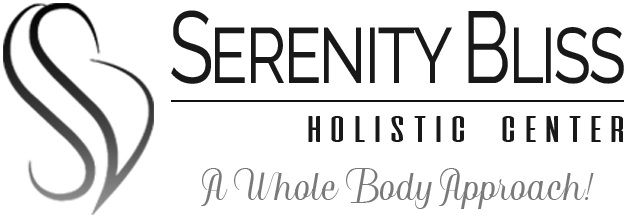What is CO2 Laser Resurfacing?
There are several types of CO2 lasers, however at Serenity Bliss Holistic Center, we offer a non-ablative, fractional CO2 Laser for skin resurfacing. Our non-ablative CO2 Laser utilizes fractional resurfacing technology, where only a small fraction of the skin receives the laser light. Thousands of tiny, but deep, columns of laser energy are produced. This eliminates old surface pigment and penetrates deep into the skin, intensively restoring the skin’s previous appearance. Around these microscopic treatment zones, the surrounding tissue is unaffected and intact. This allows the skin to heal much faster than if the entire area were treated at once, using the body’s natural healing process to create new, healthy tighter tissue. While our CO2 Laser Resurfacing and Fractional Laser Resurfacing use similar technology, the CO2 Laser is a stronger, and more aggressive laser and is said to be more effective than Fractional Laser Resurfacing alone, with less treatments required.
How is CO2 Laser Resurfacing performed?
During the procedure, your therapist will first start by cleaning the area that is to be treated, followed by the application of a topical numbing cream. You’ll numb for approximately 30 minutes before your procedure. Your therapist will then begin by using the handpiece of the fractional resurfacing laser to move over the targeted area, releasing the wavelengths of the laser. It destroys damaged skin cells and promotes the growth of newer, healthier cells. Depending on the areas being treated, the procedure can take anywhere from 10 minutes to 1 hour, excluding the time you are numbing.
Who is a good candidate for CO2 Laser Resurfacing?
CO2 Laser Resurfacing is great for those with extensive sun damage, wrinkles, age spots, scarring, or uneven skin tone. Patients with light to medium skin will have the least risk of worsening pigment issues, while patients with medium to deep skin tones are at risk of developing melasma or other types of hyperpigmentation from CO2 Laser Resurfacing treatments. Those who are on medications that cause increased light sensitivity are not recommended to receive this treatment.
Is CO2 Laser Resurfacing Painful?
Clients should be aware that a non-ablative CO2 Laser Resurfacing is known to cause mild discomfort during treatment, however since we only offer a non-ablative CO2 Laser, it does not require you to be put under anesthesia for the procedure. A topical numbing cream is applied prior to treatment to minimize discomfort, however some clients can still feel slight, warm pricks from the laser. Some clients respond well to taking ibuprofen or tylenol prior to their appointment.
How many CO2 Laser Resurfacing treatments do I need?
While everyone is different, most areas require 1 to 2 treatments for each targeted area for optimal results. Areas can be retargeted every 2 to 6 weeks, depending on the area and extent of treatment.
How will I look and feel after each CO2 Laser Resurfacing treatment?
After your CO2 Laser Resurfacing treatment, you will experience a mild sunburn sensation for about an hour and then minimal discomfort. The skin will have a pinkish tone for 3 to 7 days. This is a normal sign that the skin is beginning to heal. Swelling is common, but usually mild, and may last for 3 to 6 days. Flaking and bronzing, which are part of the normal process of skin repair, may also occur. Bronzing is a darkening of the skin that looks like a tan. The “social down-time” is usually 3 to 7 days. You will feel fine, but will likely need 3 to 7 days for the redness and mild swelling to disappear. It is important to apply an SPF 30 sunscreen daily during the healing phase and for several months after to protect the new skin.
What is required prior to CO2 Laser Resurfacing?
Prior to your CO2 Laser Resurfacing procedure, you’ll need to stop using any product that can cause skin sensitivities a minimum of 10 days before your treatment, along with 10 days after (that includes retinol, exfoliants, and acids, like glycolic acid or salicylic acid). We have several products available in spa to purchase that are recommended to use prior to your procedure to help prepare the skin, such as Alastin Regenerating Skin Nectar with TriHex Technology.
What care is required after CO2 Laser Resurfacing?
After your CO2 Laser Resurfacing treatment, you’ll want to make sure your skin is kept clean, hydrated, and protected from the sun with a medical grade SPF at all times. Avoid using any topical products or makeup for the first 24 hours, unless otherwise stated from your therapist. DO NOT pick at any scabs or flaking skin! This can cause severe pigmentation issues. We have several products available in spa to purchase that are recommended to use after your procedure to help promote healing of the skin, such as Alastin Gentle Cleanser, Alastin Hydratint Pro Mineral Sunscreen, Alastin Regenerating Skin Nectar with TriHex Technology, and Alastin Ultra Nourishing Skin Moisturizer.
What are the possible side effects of CO2 Laser Resurfacing?
Possible side effects may include, but are not limited to:
- Skin sensitivity at the treatment sites
- Pain or swelling at the treatment sites
- Redness or irritation at the treatment sites
- Hyperpigmentation or Hypopigmentation
- Acne Breakouts
- Pinpoint Bleeding
- Infection
- Cold Sores (please let us know prior to your appointment if you have a history of cold sores, as an antiviral medication may be prescribed for you)
How do I get started with CO2 Laser Resurfacing?
If you’re interested in starting CO2 Laser Resurfacing treatments, we recommend sending an email to info@serenitybhc.com that includes:
- First and last name
- Phone number
- Detailed description of the areas of concern
- Photos of the areas you’d like treated
- Description of your lifestyle and diet
- Available dates/times for your first appointment
After a Licensed Master Esthetician is able to review your information, we will give you a call to schedule your appointment or request more information if needed.
